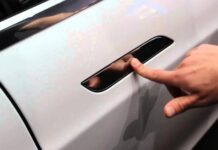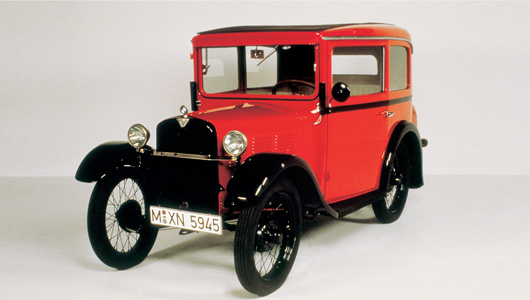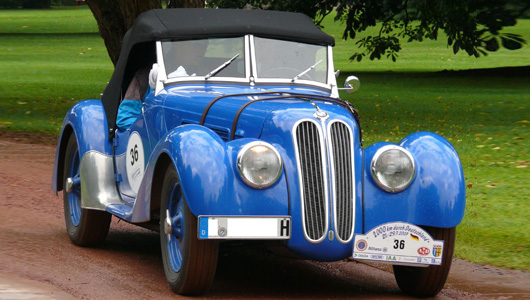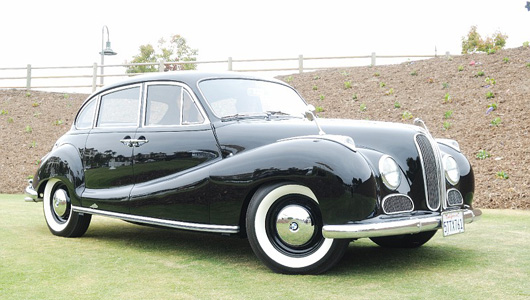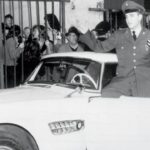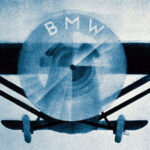BMW has become one of the largest car manufacturers in the world thanks to its cars produced in the last two decades. However, to reach this level of success, BMW has gone through almost a century of ups and downs in its development history.
The story of BMW begins in 1913 when Karl Friedrich Rapp, a renowned Bavarian engineer working in an aircraft manufacturing plant in Germany, established the Rapp Motoren Werke company in a suburb of Munich. Initially specializing in aircraft engines, Rapp soon realized that they were too complex and unreliable. In the same neighborhood, Gustav Otto, another aviation expert, founded the Gustav Flugmaschinefabrik, which focused on small aircraft production.

Rapp Motoren Werke later formed a partnership with Austro-Daimler to produce the V12 Aero aircraft engine under license. The company grew rapidly, but in 1916, Rapp faced financial difficulties and left the company. Franz Josef Popp and Max Friz, two Austrians, took over and in March 1916, merged Rapp Motoren Werke with Gustav Flugmaschinefabrik to establish Bayersiche Flugzeungwerke. The company was soon renamed to Bayersiche Motoren Werke (Bavarian Motor Works) or BMW, as we know it today.
In 1917, BMW began the production of its first aircraft engine, the Type IIIa 6-cylinder. Two years later, in 1919, Franz Zeno Deimer set a record of flying at 9,760 meters above sea level using the Type IV engine. However, after the signing of the Versailles Treaty in 1919, BMW was prohibited from producing aircraft engines and had to switch to manufacturing railway coaches. When BMW resumed aircraft engine production in 1922, they achieved great success and set more than 29 aviation records. The current BMW logo, inspired by an aircraft propeller, was introduced in 1920.
The first car to roll off the BMW production line was the R 32, which was manufactured in 1923 at the newly constructed Eisenach factory near Munich airport. The R 32 featured a horizontally arranged engine on a twin-tube frame and had a power output of 8.5 horsepower. With a 494cc 2-cylinder engine, the car could reach a top speed of 95km/h, and within three years, BMW produced 3,090 units.
In 1928, BMW made a significant leap forward in car manufacturing by introducing the Dixi 3/15 PS, marking the beginning of its car production. The Dixi 3/15 PS was produced under license from Austin and shared similarities with the Bantan model in the US and the Datsun in Japan. The first-generation Dixis had convertible bodies and featured a 734cc 4-cylinder engine producing 15 horsepower. The car had a top speed of 80km/h. A new version of the Dixi, the DA2, was released in 1929, featuring an all-steel body and a 4-wheel braking system. In 1930, the Dixi achieved its first victory in an automobile race, with a total production of 18,976 units.
In 1932, BMW introduced the BMW AM 4 (also known as 3/20 PS), which was considered the first “real” BMW. The AM 4 was the successor to the Dixi and the first commercial car entirely produced in-house by BMW. It featured a powerful 782cc 4-cylinder engine producing 20 horsepower at 3,500 rpm, allowing the car to reach a top speed of 80km/h.
In the following years, BMW continued its innovation with the release of the 303 in 1936. It was the first BMW to have a 6-cylinder engine and a double-profile grille design that later became a signature element of BMW models. The 303 featured a lightweight welded tubular frame, independent front suspension, and a rack-and-pinion steering system. With a 1173cc engine producing 30 horsepower, the 303 could reach a top speed of 90km/h.
In 1938, BMW introduced the 328, the most popular and famous sports car of BMW before the war. Designed for car races, the 328 won the race at the Mille Miglia in Italy in 1938. It quickly gained popularity as a street car as well. With a lightweight tubular frame and light alloy body parts, the 328 weighed only 558 kg. It was equipped with a powerful 1971cc 6-cylinder engine producing 80 horsepower, allowing it to reach a top speed of 150 km/h. A total of 462 units of the 328 were produced.
In 1935, BMW set a world record in the 2-wheel vehicle category. Emst Henne drove a 500cc motorcycle with a 108 horsepower engine, achieving a world speed record for 2-wheeled vehicles at 279.5 km/h, a record that lasted for two decades.
However, BMW’s prosperity was short-lived. After World War II, the company was left in ruins. Its factories were destroyed, and a three-year ban on production was imposed by the Allied forces as a punishment for BMW’s involvement in the war. The first car produced after the war, the luxurious 501 sedan, was introduced in 1951 but did not achieve the expected sales due to the country’s post-war situation.
To recover from this setback, BMW adopted a different development strategy. In 1955, the Isetta 250 was introduced to the market and became highly successful as small cars gained popularity in the 1950s. The Isetta, produced under license from Italian manufacturer Iso, was equipped with a 245cc motorcycle engine producing 12 horsepower and featured a single front door. With this engine, the car could reach a top speed of 85 km/h. A total of 161,728 units of the Isetta were produced in seven years.
Despite ongoing financial instability, BMW made another significant mark in its history a few years later with the introduction of the BMW 507 in 1956. The 507 was a 2-door convertible designed by Alberecht Graf Foertz, and its design elements can still be seen in subsequent BMW models. It was powered by a V8 3136cc engine producing 150 horsepower at 5,000 rpm and could reach a top speed of 200 km/h. Although only 252 units of the 507 were produced, it remains an iconic symbol of BMW’s post-war efforts and success in the 1950s.
The next milestone in BMW’s journey towards becoming the iconic brand we know today occurred in 1962. The 1500, which was developed during the crisis of the 1950s, played a crucial role in BMW’s recovery. The 1500 featured an innovative suspension system and cutting-edge design for its time. With a 1499cc 4-cylinder engine producing 80 horsepower at 5,700 rpm, the 1500 could reach a top speed of 148 km/h. A total of 23,807 units of the 1500 were produced within two years. When taking into account other models in the series, including the 1600, 1800, and 2000, a total of 334,165 units were produced. These models laid the foundation for BMW’s first-generation 5-series (E 12) introduced in 1972, followed by the 3-series (E 21) in 1975 and the 7-series in 1977.
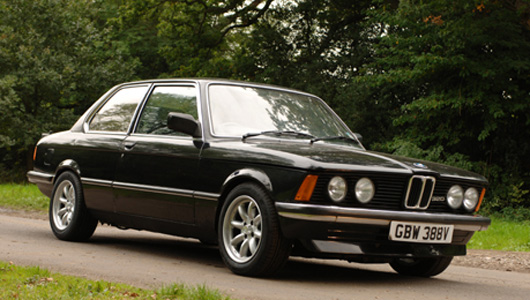
In 1990, BMW re-entered the aircraft engine manufacturing industry with the establishment of BMW Rolls-Royce GmbH in collaboration with Rolls-Royce. In 1998, BMW acquired the rights to the Rolls-Royce brand and logo from Volkswagen after a prolonged negotiation, and the transfer was scheduled to take place in 2003. In 1994, BMW acquired the Rover Group PLC. However, after significant losses, Rover separated from Land Rover, which was subsequently bought back by Ford. BMW retained the rights to the new Mini model, completing the sale in early 2002.
Today, BMW continues its legacy of producing exceptional vehicles and motorcycles by combining style, performance, and technological advancements in models such as the Z3, Z8, and the 3, 5, and 7 series cars.
Th? Ð?t (According to PL&XH/Source: T?ng h?p)


